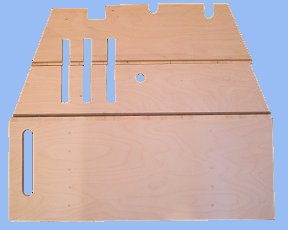
1915 - 1925 Coupe Floorboards
1915 - 1918 Coupe Floor Boards
These floor boards are used in the 1915 - 1918 Coupes before the change to the larger dash shield in 1919. Up until 1918, the notch to clear the head bolt was rounded and there was a rounded speedometer cable slot on the right side. These same floor boards were also used on the Roadster and Touring cars.

| Part Number | Description |
|---|---|
| 3626CE1 | 15 - 19 Coupe Floor Boards - Plywood |
| 3626CE1H | 15 - 19 Coupe Floor Boards - Hardwood |
1918 - 1919 Coupe Floor Boards
These floor boards are used in the 1918 - 1919 Coupes before the change to the larger dash shield in 1919. During this time the notch to clear the head bolt was made rectangular and the speedometer cable slot was eliminated. These same floor boards were also used on the Roadster and Touring cars.
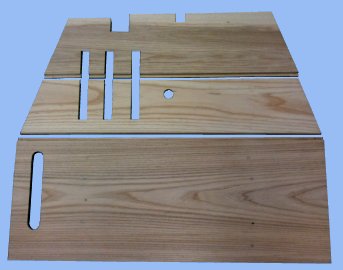
| Part Number | Description |
|---|---|
| 3626CE2 | 18 - 19 Coupe Floor Boards - Plywood |
| 3626CE2H | 18 - 19 Coupe Floor Boards - Hardwood |
1919 - 1923 Coupe Floor Boards
After the change to the larger dash shield in 1919, a large notch was added across the top edge of the floor board. These same floor boards were also used on the Roadster and Touring cars.
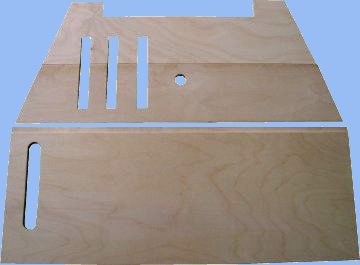 |
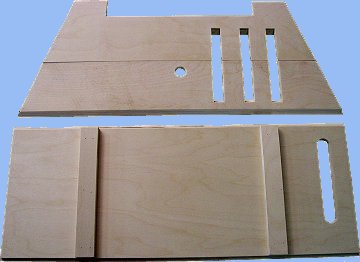 |
| Top View | Bottom View |
| Part Number | Description |
|---|---|
| 3626CE | 19 - 23 Coupe Floor Boards - Plywood |
| 3626CEH | 19 - 23 Coupe Floor Boards - Hardwood |
1924 - 1925 Coupe Floor Boards
For the 1924 model year, the coupe switched to using the same floor boards as the Centerdoor sedan, the Fordor sedan and the Tudor sedan.
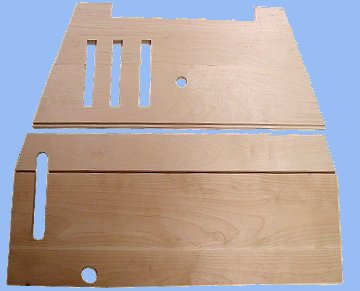
| Part Number | Description |
|---|---|
| 3626CA | 24 - 25 Coupe Floor Boards - Plywood |
| 3626CAH | 24 - 25 Coupe Floor Boards - Hardwood |
1926 - 1927 Coupe Floor Boards
For the 1926 model year, Ford standardized the front floorboards on both the open and closed cars. Thus, the Coupe, Tudor, Touring and Roadster all used the same set of floorboards. The only model that used different floorboards were the Fordor sedan. The 1926 model floorboards continued through the 1927 model year.
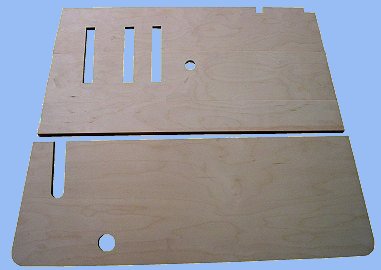 |
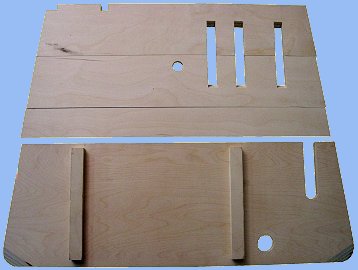 |
| Top View | Bottom View |
| Part Number | Description |
|---|---|
| 3626CB | 26 - 27 Front Floorboards Plywood |
| 3626CBH | 26 - 27 Front Floorboards Hardwood |
Assembly Notes
Painting
The wood parts of the floorboards should be painted with a semi-gloss black paint.
The metal trim plates should be painted with a gloss black paint.
Floor Board Brackets: The main floorboard consists of an upper and lower piece. These two pieces were held together by three metal brackets (not included - Lang's P/N ?????) installed on the bottom side. Each bracket was attached with four #10 x 5/8 in wood screws. See the accompanying diagram for the locations of these brackets.
Pedal Plates: There are two pedal plates which surround the pedal openings on the #1 and #2 floorboards. These are available as Lang's P/N 3625AS (1924 - 1925) or 3625BS (1926 - 1927). There are two pedal plates which surround the pedal openings on the #1 and #2 floorboards. Prior to January of 1924, the documentation specifies these to be installed using #15 x 5/8 in wire nails. Beginning on January 10, 1924, the pedal plates were riveted to the floorboards using four tubular rivets in each plate. When the draft deflector was added it was attached using the same rivets as the pedal plates. In practice it appears that a lot of the time (most of the time) the nails and rivets were not used. The pedal plates were simply slid over the slots and the tabs bent over to hold them in place. When the draft deflector was installed, the rivets were then used with the head of the rivet on the pedal plate and the peened side on the draft deflector.
Handbrake Plates: A third plate is installed around the handbrake opening. It is installed using four #15 x 5/8 in wire nails. This plate is almost the same as is used on the 1915 - 1925 open car floorboards (Lang's P/N 3633). The difference is that on the 1915 - 1925 open car floorboards the handbrake opening is contined withing the #3 floorboard which is a single flat board. On the 24-25 Enclosed cars, the handbrake opening extends across the joint of the upper and lower #3 floorboards. Since the #3 floorboard is angled, the plate also must have an angle in it. Currently the correct plate is not available, however the 1915 - 1925 open car plate can be modified to create the correct plate. The modifictaion is quite simple. Locate the location of the bend on the plate. On the back side of the plate make two small cuts in the tab, one on each side of the opening. Bend the front part of the plate upwards 30 degrees to match the angle of the #3 upper floorboard.